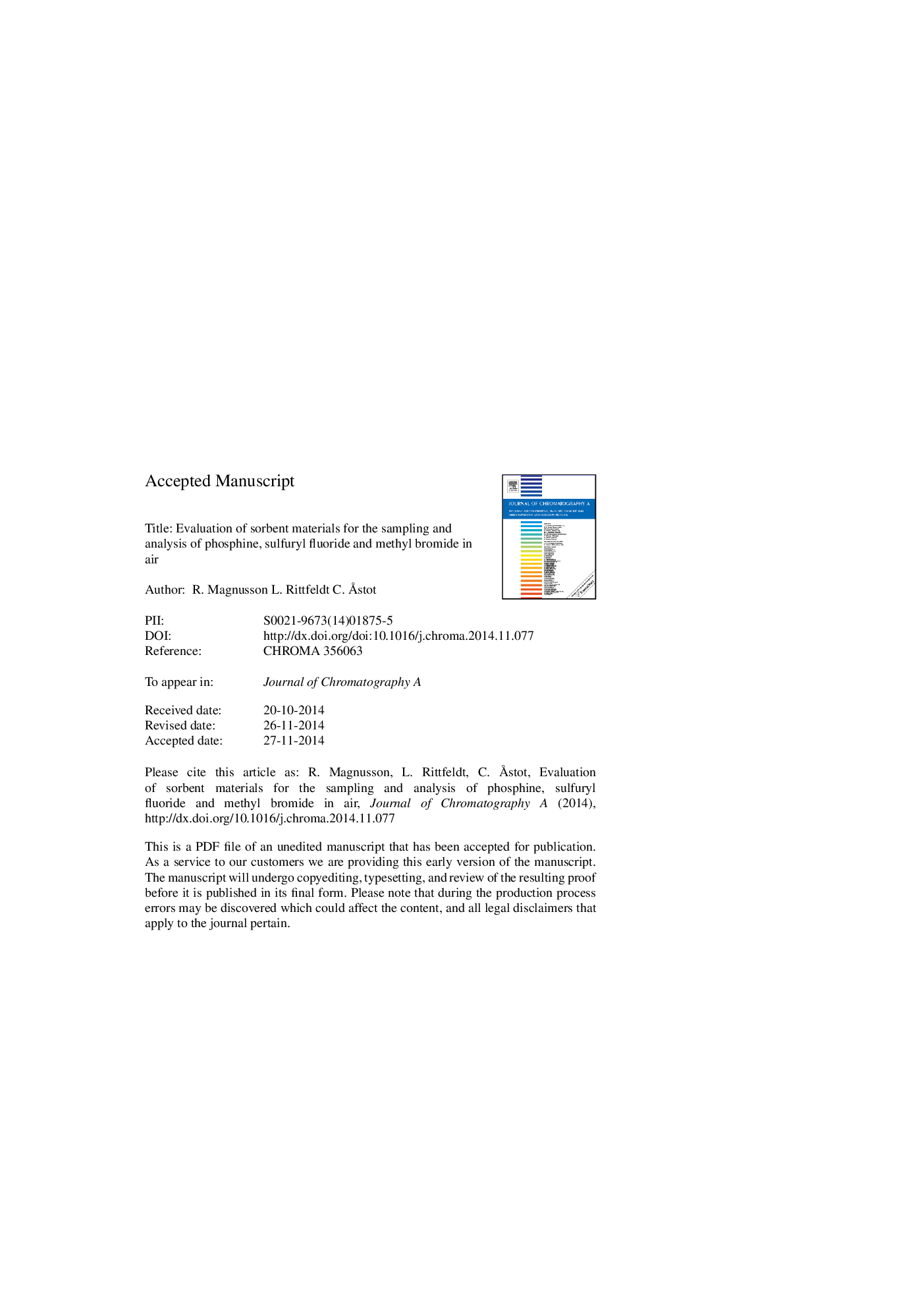| Article ID | Journal | Published Year | Pages | File Type |
|---|---|---|---|---|
| 7612144 | Journal of Chromatography A | 2015 | 31 Pages |
Abstract
Phosphine (PH3), sulfuryl fluoride (SO2F2) and methyl bromide (CH3Br) are highly toxic chemical substances commonly used for fumigation, i.e., pest control with gaseous pesticides. Residues of fumigation agents constitute a health risk for workers affected, and therefore accurate methods for air sampling and analysis are needed. In this study, three commercial adsorbent tubes; Carbosieve SIIIâ¢, Air Toxics⢠and Tenax TAâ¢, were evaluated for sampling these highly volatile chemicals in air and their subsequent analysis by thermal desorption-gas chromatography-mass spectrometry (TD-GC-MS). The breakthrough volume (BTV) of each fumigant was experimentally determined on the different adsorbents at concentrations at or above their permissible exposure limits, using a method based on frontal chromatography of generated fumigant atmospheres. Carbosieve SIIIâ¢, a molecular sieve possessing a very high specific area, proved to be a better adsorbent than both Air Toxics⢠and Tenax TAâ¢, resulting in at least a 4-fold increase of the BTV50%. BTV50% for Carbosieve SIII⢠at 20 °C was measured as 4.7 L/g, 5.5 L/g and 126 L/g for phosphine, sulfuryl fluoride and methyl bromide, respectively, implying safe sampling volumes of 1.9 L, 2.2 L and 50 L, respectively, for a commercial tube packed with 800 mg Carbosieve SIIIâ¢. The temperature dependence of BTV was strong for Carbosieve SIIIâ¢, showing a reduction of 3-5%/°C in breakthrough volume within the range â20 to 40 °C. Furthermore, although Carbosieve SIII⢠reportedly has a higher affinity for water than most other adsorbents, relative humidity had only a moderate influence on the retention capacity of phosphine. Overall, the applicability of Carbosieve SIII⢠adsorbent sampling in combination with TD-GC-MS analysis was demonstrated for highly volatile fumigants.
Related Topics
Physical Sciences and Engineering
Chemistry
Analytical Chemistry
Authors
R. Magnusson, L. Rittfeldt, C. Ã
stot,
